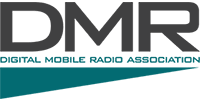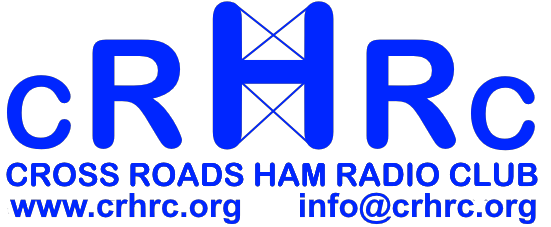
Cross Roads Ham Radio Club operates two DMR repeaters:
Edna (Jackson County), TX on 444.050 MHz with a Color Code of 7
and Pasadena, TX on 442.275 MHz with a color code of 3.
OK, great. So what exactly is DMR?
DMR stands for Digital Mobile Radio. DMR is an open standard created to make an inexpensive digital radio system that was simple to operate and which would allow different radio manufacturers to develop interoperable radios. While some radio manufacturers have proprietary digital modes that only work within their own brand (D-Star, Fusion, C4FM) any brand of DMR radio is capable of communicating with a different brand of DMR radio. DMR users are able to communicate with other DMR users worldwide.
Understanding DMR requires learning a few new terms.
DMR ID:
To use a DMR radio, you will need to get DMR ID which is a unique identification number assigned to you and your call sign. Your DMR ID identifies you as a unique user on DMR radio networks and repeater systems.
Time Slots:
DMR systems divide a frequency into two Time Slots creating two logical channels. Each time slot can carry a different conversation at the same time. These are referred to as Timeslot 1 and Timeslot 2.
Color Codes:
DMR uses a component called Color Codes. Color Codes are very similar to the CTCSS or PL tones used on analog repeaters. You will need to get the appropriate Color Codes from the club or repeater owner running a DMR system to access the repeater. Without the correct Color Code, you will not be able to access the repeater.
Talkgroups:
Talkgroups are a way of organizing radio traffic on the DMR network. As an example, unique talk groups can be created for countries, states, regions, or cities. Talkgroups have been created for interests such as technology and off-roading.
Codeplug:
A code plug is a software file that tells your radio what to do and how to operate. Creating a custom code plug for your radio is a learning experience coming from a world of analog radio. Enlisting the help of an experienced DMR user may be a big help.
Cross Roads Ham Radio Club DMR Repeater Parameters
| Location | Frequency | Offset | Mode | Color Code | |
| Edna, TX | 444.050 MHz | +5 MHz | DMR | CC7 | |
| Timeslot | Talkgroup Name | DMR Server | Talkgroup ID | Notes | |
| TS1 | Lone Star Texas | C-Bridge | 3148 | Connected full time | |
| TS1 | Texas Chat | Brandmeister | 31480 | PTT – 15 minute time out | |
| TS1 | North Texas | Brandmeister | 31481 | PTT – 15 minute time out | |
| TS1 | South Texas | Brandmeister | 31482 | Full time | |
| TS1 | West Texas | Brandmeister | 31483 | PTT – 15 minute time out | |
| TS1 | S.E. Texas | Brandmeister | 31484 | PTT – 15 minute time out | |
| TS2 | Local Repeater Chat | 2 | Full time | ||
| TS2 | CRHRC VHF Analog Link | AllStar VHF Hub | 11 | Full time | |
| TS2 | Extended Area Chat | 50 | Full time | ||
| Location | Frequency | Offset | Mode | Color Code | |
| Pasadena, TX | 442.275 Mhz | +5 MHz | DMR | CC3 | Member owned |
| Timeslot | Talkgroup Name | DMR Server | Talkgroup ID | Notes | |
| TS1 | Lone Star Texas | C-Bridge | 3148 | Full time | |
| TS1 | S.E. Texas | Brandmeister | 31484 | PTT – 15 minute time out | |
| TS2 | Local Repeater Chat | 2 | Full time | ||
| TS2 | CRHRC VHF Analog Link | AllStar VHF Hub | 11 | PTT – 15 minute time out | |
| TS2 | Extended Area Chat | 50 | Full time |
- Local Repeater Chat (TG 2) allows you to communicate with other DMR users within range of the CRHRC DMR Repeater.
- CRHRC VHF Analog Link (TG 11) connects you to all systems currently linked to the CRHRC VHF Hub.
- CRHRC UHF Analog Link (TG 33) connects you to all systems currently linked to the CRHRC UHF Hub.
- PTT means when you transmit that specific Talkgroup, it is dynamically enabled through the repeater. After a given time of no activity, the Talkgroup is disconnected.
Additional DMR Resources
- DMRTexas.net – Great resource for Texas DMR repeaters and general DMR information.
- RadioID.net – Get your DMR ID here.
- CRHRC SE Texas CBridge Control Center
- Brandmeister (BM) DMR Network
- CRHRC Example Code Plugs
